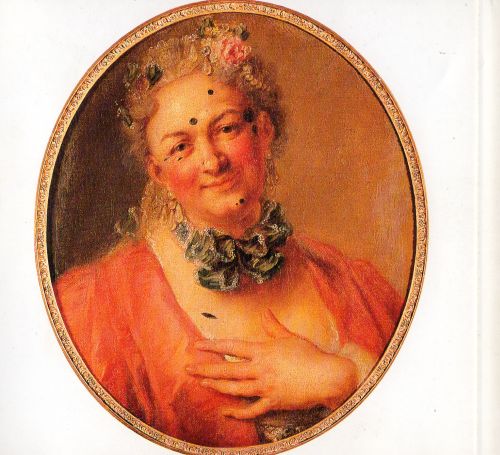 United States Rameau, Platée: Soloists, chorus, and orchestra of Les Arts Florissants, Paul Agnew (conductor), Alice Tully Hall, Lincoln Center, New York, 2.4.2014 (SSM)
United States Rameau, Platée: Soloists, chorus, and orchestra of Les Arts Florissants, Paul Agnew (conductor), Alice Tully Hall, Lincoln Center, New York, 2.4.2014 (SSM)

Concert Version
Cast:
Marcel Beekman: Platée
Edwin Crossley-Mercer: Jupiter
Marc Mauillon: Cithéron
Cyril Auvity: Mercure and Thespis
Simone Kermes: La Folie
Emilie Renard: Junon
Emmanuelle de Negri: L’Amour and Clarine
Virginie Thomas: Thalie
João Fernandes: Momus
I’ve been lucky enough to attend two major productions of Platée: the New York City Opera’s revival in 2004 and the Opéra Garnier’s revival in 2006. Whether due to lack of funding or other causes, this performance from Les Arts Florissants was a stripped-down concert version of Robert Carsen’s well-reviewed revival at the Theater an der Wien and the Opéra Comique, and it suffered from that.
Carsen’s staging in Europe placed the cast in the middle of a high-fashion show, with Jupiter dressed and made up to look like designer Karl Lagerfeld, Juno in Coco Chanel and La Folie costumed à la Lady Gaga. It’s an interesting conceit, putting a character like Platée in a place where being out of fashion is sufficient reason for him to be made into a pariah. However, the fashion-show concept wasn’t made clear in this concert version, and information on the setting would have helped place the opera in context and clarified some of the costuming and connections.
Losing the staging also meant losing the dancing, which left the audience without anything of visual interest for long stretches at a time. Mark Morris’s choreography at the City Opera and Laura Scozzi’s in the Paris production tightened and filled the opera’s many non-vocal interludes which, as well played as they were here, were ultimately just too static.
To compare these three productions of Platée is to realize that Rameau provided for an extremely wide range of interpretations. The libretto is so silly that there could hardly be anything done to it that would make it sillier. The 2006 Paris production with Paul Agnew as Platée is set in a theater with rows of balcony seats facing the audience as if the actors on stage were watching us. With the cast running up and down the staircases and sitting expressionless, this could have effectively been choreographed by Pina Bausch. In contrast, the 2004 NYCO production opens in a gay bar with partly clad men soliciting each other, and it sets the characters in a cartoon-like swamp. Outrageous costuming by Isaac Mizrahi added to the success of this production.
So what were we left with? I was telling someone this morning about the performance and was asked who the group was. Upon being told “Les Arts Florrissants” her response was, “Oh, then it had to be good.” Of course she is right. Every production I’ve ever seen by this group rises far above those of any other historical performance ensemble. Season after season through “Le Jardin des Voix,” William Christie has been able to consistently train many of the vocalists who so enthusiastically sing and act in his musical word. One may question some musical decisions as to tempo and dynamics, but there is no question about the musicians’ capabilities. They make no attention-grabbing show of their skills, and at this performance many players smiled and laughed, charmed as much by the characters as was the audience. There are no questions about technique. Christie has so successfully mastered Baroque practice that it would be hard to find the harshest critic of early music performance who would feel the need to question him on issues such as vibrato (absolutely none), instruments (all original) and scores (nothing cut, all da capos taken).
The highlight of Platée has always been La Folie’s “Formons les plus brilliants concert.” While not quite as outrageous as Jennifer Smith’s La Folie in the 2004 production where, dressed in sheets of music, she hands them out to the orchestra, Simone Kermes gave her own maniacal reading: improvising the melismas and adding a last note two octaves above the actual aria’s final notes. If she has been called “Lady Gaga of classical music” by the press, she has found here in Platée the right vehicle and costume.
There was no attempt to present Platée her/himself as a frog as is done in the other productions. In truth, Marcel Beekman’s Platée came closer to the historical portrait we have of the actor Jelyotte who played Platée in the premier in 1745. Beekman, who at times fell into the role of the Australian cross-dresser/comedian Dame Edna, acted and sang a little too broadly. He never conveyed the expressive sensitivity of Paul Agnew, whose anger at being hoodwinked was both repulsive and touching. Jean-Paul Fouchécourt, from the 2004 NYCO production, is the voice I hear when I think of Platée.
We should be happy for whatever Rameau and William Christie we are offered, but I hope that in the future Les Arts Florissants will be able to stage this work in New York in the way it deserves.
Stan Metzger